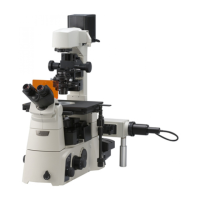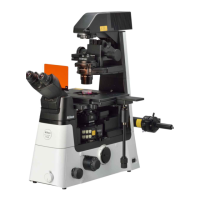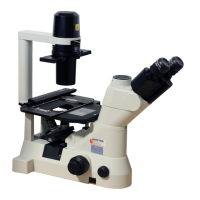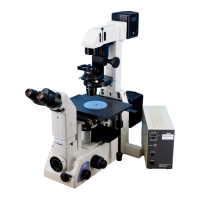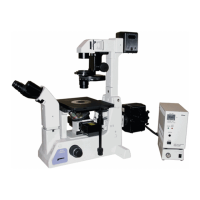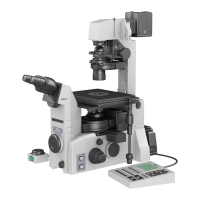Chapter 3 Operation
3.14 PFS (Perfect Focus System) Operation
81
3.14 PFS (Perfect Focus System) Operation
This section describes the operation of the PFS (Perfect Focus System).
To use PFS, attach the PFS Motorized Nosepiece and the PFS offset controller to Ti-E or Ti-E/B, and use
PFS ready objectives. You will also need to register the objective information on the microscope. For
assembly details, refer to Chapter 4, “Assembly.”
3.14.1 PFS Overview
The PFS is used to keep focus for long-term observations. It automatically corrects focus drift caused by
thermal expansion of the stage or temperature change of the specimen.
The PFS uses near-infrared rays (IR wavelength, 870 nm) that do not interfere with normal observations to
detect the boundary surface
(NOTE 1)
between the cover glass
(NOTE 2)
and the aqueous solution of the
specimen, and then maintains focus by automatically tracking the vertical shift of that surface.
It can be useful, for example when continuously observing or photographing changes in living cells, as it is
not affected by changes in the specimen or by discoloration under fluorescent light, and is capable of
maintaining the focus by compensating for minor focus shifts that may occur with time or by stage
movements.
NOTE 1 : When using a dry objective, the boundary surface between the cover glass and air will be detected.
NOTE 2 : The “cover glass” refers to the glass on the bottom surface of a glass-bottomed dish.
Features of PFS
• The PFS uses infrared rays to keep focus. As infrared rays have minimal effect on the specimen, and do
not interfere with fluorescent observation, the focus can be maintained while performing fluorescent
observation.
• The optical offset function allows for manual adjustment of the focus position.
• The vertical position (Z-axis position) of the nosepiece and the focus offset can be registered
independently for each objective.
• Focus can be maintained for any target within the field of view.
• Focus can be maintained with any observation camera or method (including macroscopic), unlike with the
image contrast method that can only be used with certain cameras.
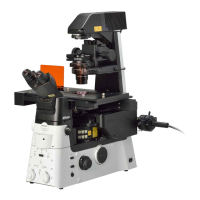
